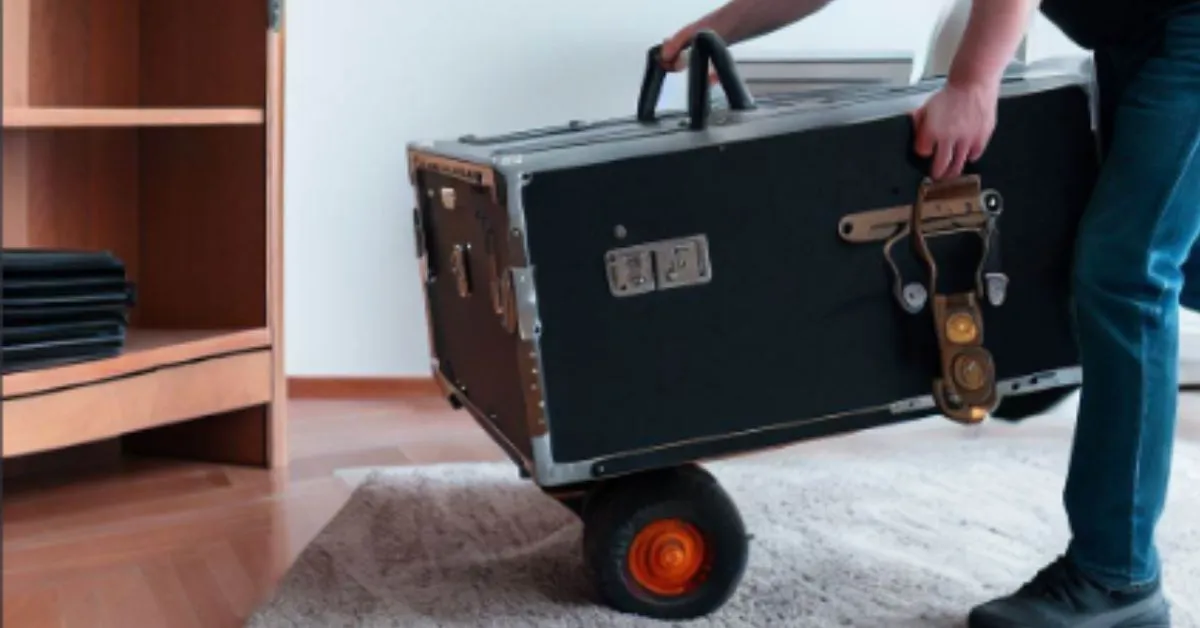The daunting task of moving a heavy safe can seem overwhelming, but with the right approach and tools, such as a dolly, it can become a manageable endeavour.
In this guide, we will walk you through the step-by-step process of how to move a safe with a dolly, ensuring a safe and efficient relocation.
Whether you’re a homeowner looking to reposition your safe or a professional mover, these tips will help you navigate the process with confidence.
How To Move A Safe With A Dolly?
To move a safe with a dolly, first, secure the safe on the dolly with straps. Tilt the safe onto the dolly, ensuring it’s centred and balanced. Carefully wheel the safe to its destination, keeping a steady pace and watching for obstacles.
So this was a short guide on how to move a safe with a dolly now let us move over toward the step-by-step guide on how to execute this task with ease.
Step By Step Guide-
Step 1: Gather Your Supplies
Before you begin, ensure you have all the necessary supplies on hand. You will need a heavy-duty dolly with straps, moving blankets or pads, gloves, a friend or assistant to help, and a clear path from the current location of the safe to its new destination.
Step 2: Evaluate the Safe
Before you attempt to move the safe, assess its weight and dimensions. This information will help you choose the appropriate dolly for the job and ensure your safety during the process. Remember, safety should be your top priority.
Step 3: Choose the Right Dolly
Select a dolly that can handle the weight of the safe and is equipped with straps to secure the safe in place. A flat, platform-style dolly is often the best choice, as it provides a stable base for the safe and prevents it from tipping over during transit.
Step 4: Prepare the Safe
Prior to moving the safe, clear out its contents and lock the door securely. Use moving blankets or pads to protect its surface from scratches and dents during the relocation.
Step 5: Position the Dolly
Position the dolly close to the safe, ensuring that it is centered and stable. If your dolly has straps, loosen them in preparation for securing the safe.
Step 6: Tilt and Secure
Enlist the help of your assistant to carefully tilt the safe onto its side. Slide the dolly underneath the safe, ensuring that it’s snug against the base. If your dolly has straps, secure them around the safe to keep it firmly in place.
Step 7: Test the Balance
Before fully committing to the move, check the balance of the safe on the dolly. Gently rock it back and forth to ensure it’s secure and won’t tip over during transportation.
Step 8: Begin Moving
With the safe securely positioned on the dolly, slowly begin to move forward. Maintain a steady pace and avoid sudden jerks or movements that could destabilize the safe.
Step 9: Navigate Obstacles
If you encounter any obstacles or tight spaces during the move, proceed with caution. Clear the path of any potential hazards and communicate effectively with your assistant to ensure a smooth passage.
Step 10: Arriving at the Destination
Once you’ve reached the safe’s new location, carefully position the dolly in a secure spot. With the help of your assistant, gently tilt the safe off the dolly and onto the floor. Remove the straps and any protective coverings.
Choosing the Right Dolly
When it comes to moving a heavy safe with a dolly, the choice of the right dolly is crucial. The wrong dolly can lead to accidents and damage to the safe. Here’s a detailed look at how to select the appropriate dolly for your safe-moving task:
- Weight Capacity: Consider the weight of your safe and choose a dolly that can comfortably handle it. Check the dolly’s weight capacity rating, which should be clearly marked on the equipment. Ensure the dolly’s capacity exceeds the weight of your safe.
- Type of Dolly: Opt for a flat, platform-style dolly. These dollies provide a stable base for the safe and are less prone to tipping during transit. They also distribute the weight more evenly, reducing the risk of damage.
- Wheels: Check the wheels of the dolly. Large, sturdy wheels are ideal for moving heavy safes, especially if you need to navigate uneven surfaces or thresholds. Swivel wheels can provide better manoeuvrability.
- Strapping Capability: If possible, choose a dolly equipped with straps or other securing mechanisms. These will help keep the safe in place during the move, enhancing safety.
- Quality and Durability: Invest in a high-quality dolly that can withstand the weight and demands of moving a safe. It’s worth paying a little extra for a durable dolly that will ensure a smooth and safe relocation.
You can read this article as well where we have already picked the best dolly available in the market.
Conclusion-
Moving a heavy safe with a dolly, as outlined in this guide on how to move a safe with a dolly, may seem like a daunting task, but with careful planning and execution, it can be a successful endeavour.
Always prioritize safety and enlist the help of a friend or assistant to make the process smoother.
By following these steps and taking your time, you’ll be able to relocate your safe without unnecessary stress or risk.
Remember, the right dolly and preparation are key to ensuring a safe and efficient move.

